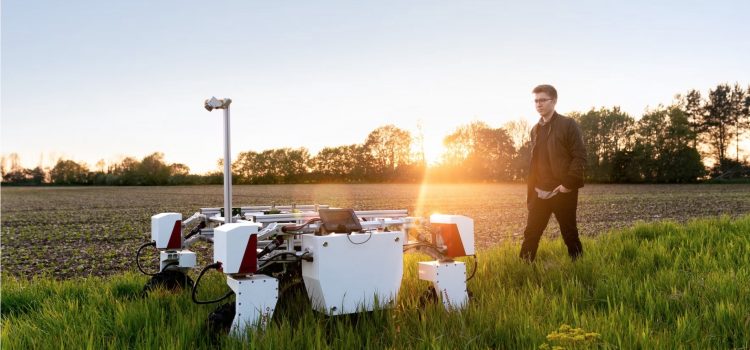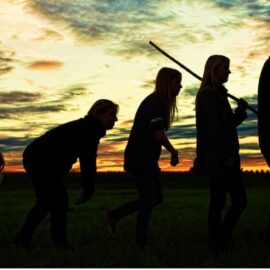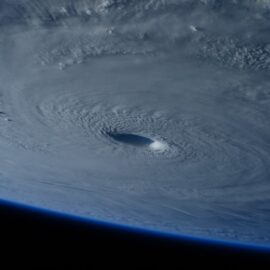
This is a free excerpt from one of Shortform’s Articles. We give you all the important information you need to know about current events and more.
Don't miss out on the whole story. Sign up for a free trial here .
What are the impacts of technology on agriculture and conservation? What are the roles of big data and robotics?
New technology in big data management and robotics is giving nature a hand, on the farm and in the wild. Reducing human labor and protecting vulnerable animals are just a couple of the positive impacts of modern technology on agriculture and conservation.
Keep reading to learn about the four primary impacts of technology on agriculture and conservation.
Impact of Technology on Agriculture
Technology and nature, long seen as incompatible, are reconciling. New technologies are helping farmers improve their crop yields and animal management practices. In addition, the impact of technology on agriculture has expanded into conservation efforts, helping conservationists protect forests, endangered birds, and animals at risk of poaching.
In this article, we’ll first discuss the two biggest impacts of technology on agriculture, then we’ll explain two ways technology is positively impacting conservation efforts.
#1: Saving Time, Water, & Money With Big Data
Advances in sensing technology are positively impacting the type and quantity of data that can be collected in agriculture. Soil sensors, for example, can now measure water content, temperature, nutrient levels, and pH over small areas, allowing farmers to tailor their irrigation methods and fertilizer use to match local crop needs, saving water, fertilizer, and money. “Plant wearables” (think fitbits for plants) can be attached to the plant itself to measure growth, UV radiation, and markers of stress.
Advances in data collection technology also allow farmers to keep a closer eye on their animals. Dairy farmers can now automatically monitor each cow’s eating, rumination, exercise, and sleeping patterns, receiving alerts if there are behavior changes. Cell sensors can measure cell counts in milk, which allows infections to be detected earlier.
#2: Harvesting & Milking With Robotics
Robotics is another positive impact of technology on agriculture, being used to identify which fruits or grains are ready to be harvested, then gather them using complex, delicate actions that don’t damage the produce. Robots currently aren’t as versatile as humans (plant-specific robots have to be developed, such as those for raspberries, apples, strawberries, and sweet peppers), and they’re nowhere near as fast, but scientists expect to solve the speed problem soon.
In dairy farming, milking robots provide farmers with real-time data on milk production and quality. The robots also allow cows to choose when and how often they want to be milked, and this makes the cows happier. Milking robots can also be programmed to remember each cow and track her health, which helps farmers prescribe individualized feed supplements.
Impact of Technology on Conservation
Aside from agriculture, some positive impacts of technology in conservation efforts include embracing new technologies to fight illegal logging, poaching, and extinction.
#3: Protecting Forests & Animals With Big Data
For example, a logging detector developed for use in the Borneo jungle combines old android smartphones with solar panels. These devices upload audio information to a cloud, where it’s monitored to detect trucks or chainsaws and send an alert.
Innovative sensors are also protecting endangered birds such as the California condor. Wind turbines account for hundreds of thousands of bird deaths annually; however, “geofencing” technology can build a virtual fence around wind farms that detects approaching birds. It then turns off turbines temporarily until the birds have cleared the area.
#4: Planting Trees & Defending Against Poachers With Robotics
Robotics is also being used to support conservation. For example, an organization called Flash Forest uses drones to plant trees much faster than humans can. These drones don’t just plant seeds—they drop seed pods that contain an optimum mix of species as well as nutrients and boosters.
Drones are also being deployed to watch for poachers, giving rangers a chase to stop them before they kill any animals. Drones are protecting rhinos and tigers in Chitwan National Park, Nepal and rhinos, lions, and elephants in Kruger National Park, South Africa, among other places. There are also more creative uses: Because elephants are afraid of bees, the buzzing sound of drones can be used to scare them away from places where they’re in danger of being shot.

Want to fast-track your learning? With Shortform, you’ll gain insights you won't find anywhere else .
Here's what you’ll get when you sign up for Shortform :
- Complicated ideas explained in simple and concise ways
- Smart analysis that connects what you’re reading to other key concepts
- Writing with zero fluff because we know how important your time is






